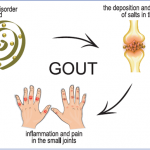Understanding the characteristics of intended treatment populations that are of most interest to payers can aid in strategic drug product development and commercial planning, he added. Researchers should look at patient populations and determine who is undertreated or unresponsive to treatment, expensive to treat, adherent or not, and at high risk for progression of disease or acute events, Dr. Willke suggested. He also recommended that researchers identify key comparators, evidence gaps, and likely effects of trial results, and then parse out different types of patients before identifying an intended treatment population.
“Payers want trials to reflect clinical practice, and to show which patients will benefit,” said, Christine Fletcher, executive director of biostatistics at Amgen, Inc., who recently set up an HTA biostatistics group at her company. She noted that Germany has a new law requiring trials to investigate which patients get the most benefits from a drug. She gave advice about how statisticians can design drug trials that incorporate payer requirements so that marketed products ultimately receive insurer reimbursement.
To demonstrate a drug is cost effective, it is important to show how a drug performs relative to other interventions in subgroups of patients of interest to insurers, she said. Many studies of relative effectiveness include indirect comparisons, also known as network meta-analyses, which are useful for drugs that have not been studied together in head-to-head clinical trials. Indirect comparisons require a number of assumptions and careful interpretation of results due to potential biases and limitations of the methodology, said Fletcher, who recommended a few ways to add statistical value to indirect comparisons.
These include understanding the existing clinical evidence, assessing clinical and statistical sources of heterogeneity, investigating heterogeneity and variability in treatment effects, and conducting meta-regression analyses to explore important prognostic variables. Key to indirect comparisons is conducting extensive sensitivity analyses that enable the robustness of conclusions to be evaluated, she added.
These tactics make drug products more marketable. “Understand that the traits of the intended treatment population are of the most interest to payers and can aid in strategic development,” Willke said. Such a focus would be good news for rheumatology patients as well.
Deborah Levenson is a medical writer based in College Park, Md.
References
- Beta-Blocker Evaluation of Survival Trial Investigators. A trial of the beta-blocker bucindolol in patients with advanced chronic heart failure. N Engl J Med. 2001;344:1659-1667.
- Chambers JD, Morris S, Neumann PJ, Buxton MJ. Factors predicting Medicare national coverage: An empirical analysis. Med Care. 2012;50: 249-256.
